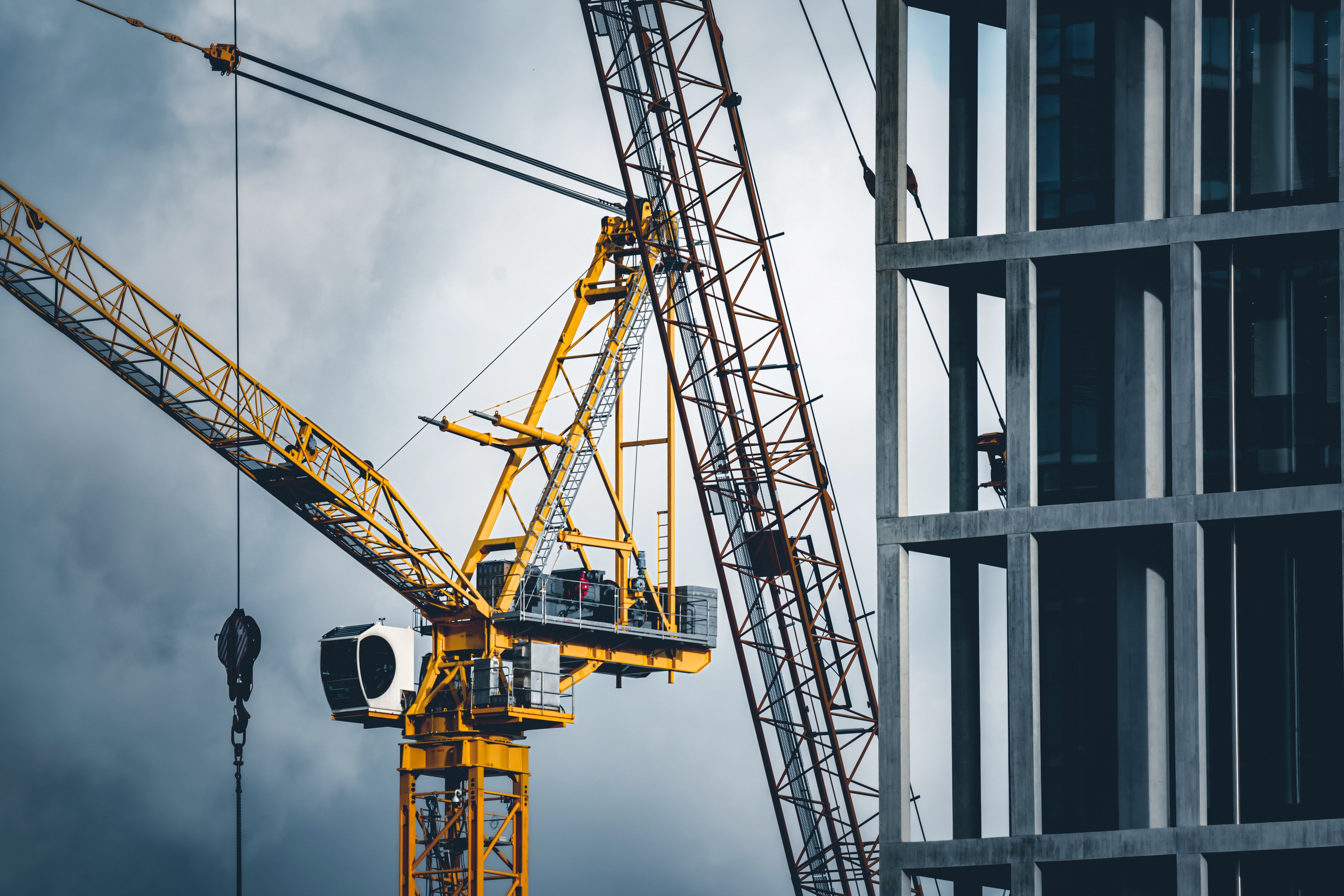Features > Property News & Insights > Housing Trends
Weak building approvals lead to investor optimism

KEY POINTS
- While official ABS Building Approvals figures for March showed a small gain, they remain weak, coming off their lowest level in 12 years
- Housing industry analysts say the weak figures call into question the National Housing Accord targets of building 240,000 new homes each year through until 2029
- ABS Lending Indicators data shows strong growth in new loans to property investors, attracted by low vacancy rates, rent and capital growth, and tax advantages
Two sets of figures released by the Australian Bureau of Statistics (ABS) this week demonstrate very clearly the ongoing crisis in the housing market and how savvy property investors are taking advantage of this.
Weak building approvals figures for March 2024 and the latest ABS Lending Indicators data showing greater investor activity in the housing sector point to one inescapable conclusion: there is greater demand than supply in the housing market, and this will continue for the foreseeable future, continuing to drive up home prices and rents.
Building Approvals figures

ABS figures show total homes approved in March 2024 rose 1.9% to 12,947 in seasonally adjusted terms.
While there was a rise in the previous month, it’s worth noting that February’s figures were the weakest monthly result since 2012.
They also came in well below market consensus forecasts of a 3.4% lift.
House approvals rose 3.8% for the month, while “private attached dwellings” (which includes apartments and townhouses) were up 3.6% to 3,936.
In a very real sign of the parlous state of public housing in Australia and, I would argue, the continuing disgraceful underinvestment by governments, just 112 public dwellings were approved.
It’s worth noting that the federal government’s National Housing Supply and Affordability Council has just revealed that there are currently 170,000 people on waiting lists for public housing across Australia, with another 122,000 people experiencing homelessness.
“The rise in approvals, while welcome, are a drop in the ocean as we seek to address our national housing supply deficit,” the Property Council of Australia’s Head of Policy and Advocacy Matthew Kandelaars says.
“While Victoria and Western Australia saw a slight rise in dwelling approvals, every other state saw dwelling approvals fall.”
“The total number of dwellings approved for both standalone houses and apartments are still at historically low levels.”
Another leading housing group, Master Builders Australia, says the approvals figures show that just 161,500 new homes have been given the go-ahead over the past year.
The group’s CEO, Denita Wawn, says the “figures stand in sharp contrast to the yearly target of 240,000 new homes under the National Housing Accord.”
That’s the agreement between the federal and state governments, which is meant to see 1.2 million “affordable and well-located” homes built over five years from the 1st of July this year.
So what’s holding things back?
“It is all about planning approvals…the delay in planning approvals, improper zoning.. to enable us to build,” Denita Wawn told Sky News.
“We will need to ensure that in housing going forward, at least 50% of those houses built have got to be medium density of up to about six levels through to high rise.”
Good luck getting NIMBY councils to agree to that!
“It’s all well and good to champion new home building targets (which won’t be achieved) and significant reforms that have been discussed for over twenty years, yet progress (is) seemingly at a glacial pace,” says longtime housing analyst Harley Dale.
“Where is the plan to speed everything up in 2024/05 and 2025/06?”
That’s a very good question.
ABS Lending Indicators
Separate figures from the ABS show that new housing loan commitments over the same period (March 2024) have grown strongly.
They rose 3.1% in March to $27.64 billion in seasonally adjusted terms.
The key to this growth is lending to property investors, which is continuing to outpace lending to owner-occupiers.

New investor loans saw a month-on-month increase of 3.8% to $10.17 billion, the highest level since mid-2022.
In fact, over the last year, lending to property investors has soared by 31.1%.
“Strong rental growth and extremely low vacancy rates are drawing out investor demand while negative gearing incentives have also become more powerful in the higher interest rate environment,” says Maree Kilroy, Senior Economist for Oxford Economics Australia.
Even though there’s now plenty of speculation that there will be no interest rate cuts by the Reserve Bank of Australia this year, Maree Kilroy says Oxford Economics is still expecting “national house price growth to be sustained over 2024, increasing 4.7%.”
She believes that once rates are cut, that will “pass through to stronger price growth thereafter.”
The take-out
The weak building approvals figures underline the fact that there is a continuing chronic housing shortage in Australia, with not enough new homes being built to house our growing population.
The basic rules of supply and demand mean one thing.
Home prices and rents will continue to increase.
Smart investors can see this fundamental imbalance between supply and demand.
The ABS Lending Indicator figures show they are flocking to the housing market in droves, attracted by good capital growth for homes, low vacancy rates, increasing rents and good rental yields, not to mention the significant tax advantages offered to those who invest in Australian residential property.
Stay Up to Date
with the Latest Australian Property News, Insights & Education.




.png?width=292&height=292&name=Copy%20Link%20(1).png)
 SIGN UP FOR FREE NEWSLETTER
SIGN UP FOR FREE NEWSLETTER








.jpg?width=1920&height=1080&name=Warning%2c%20You%20Might%20Be%20Facing%20Higher%20Taxes%20Soon%20(1).jpg)





.png?width=1920&height=1080&name=Rate%20Drops%20Signal%20BIGGEST%20Property%20Boom%20in%20DECADES%20(1).png)

.jpg?width=1920&height=1080&name=Labor%20vs%20Liberal%20These%20Housing%20Policies%20Could%20Change%20the%20Property%20Market%20Forever%20(1).jpg)
.jpg?width=1920&height=1080&name=QLD%20Slashes%20Stamp%20Duty%20Big%20News%20for%20Investors%20%26%20Home%20Buyers%20(1).jpg)
.jpg?width=1920&height=1080&name=Trump%20Just%20Slapped%20Tariffs%20%E2%80%93%20Here%E2%80%99s%20What%20It%20Means%20for%20Australia%20(1).jpg)
.jpg?width=1920&height=1080&name=Federal%20Budget%202025%20More%20Debt%2c%20No%20Housing%20%E2%80%93%20Here%E2%80%99s%20What%20You%20Need%20to%20Know%20(1).jpg)
.jpg?width=1920&height=1080&name=Australias%20Housing%20Crisis%20is%20about%20to%20get%20MUCH%20Worse%20(New%20Data%20Warns).jpg)
%20(1).jpg?width=1920&height=1080&name=Australias%20RENTAL%20CRISIS%20Hits%20ROCK%20BOTTOM!%20(2025%20Update)%20(1).jpg)
%20(1).png?width=1920&height=1080&name=Is%20Adelaide%20Still%20a%20Good%20Property%20Investment%20(2025%20UPDATE)%20(1).png)
.jpg?width=1920&height=1080&name=RBA%20Shocks%20with%20Rate%20Cuts!%20What%E2%80%99s%20Next%20for%20Property%20Investors%20(1).jpg)
%20(1).jpg?width=1920&height=1080&name=I%20Predict%20The%20Feb%20Rate%20Cut%20(My%20Price%20Growth%20Prediction)%20(1).jpg)
.png?width=1920&height=1080&name=Why%20Property%20Prices%20Will%20Rise%20in%202025%20Market%20Predictions%20(1).png)
.jpg?width=1920&height=1080&name=Why%20Investors%20Are%20Choosing%20Apartments%20Over%20Houses%202%20(1).jpg)
.jpg?width=1920&height=1080&name=Why%20Rate%20Cuts%20Will%20Trigger%20A%20Property%20Boom%20(1).jpg)
.jpg?width=1920&height=1080&name=Retire%20On%202Million%20With%20One%20Property%20(Using%20SMSF).jpg)
.jpg?width=1920&height=1080&name=4%20Reasons%20Why%20You%20Should%20Invest%20in%20Melbourne%20Now%20(1).jpg)
%20(1).jpg?width=1920&height=1080&name=Old%20Property%20vs%20New%20Property%20(Facts%20and%20Figures%20Revealed)%20(1).jpg)
%20(1).jpg?width=1920&height=1080&name=Will%20The%20New%20QLD%20Govt%20Create%20a%20Property%20Boom%20or%20Bust%20(My%20Prediction)%20(1).jpg)
%20Scott%20Kuru%20(1).jpg?width=1920&height=1080&name=Inflation%20Hits%20Three-Year%20Low%20(Will%20RBA%20Cut%20Rates%20Soon)%20Scott%20Kuru%20(1).jpg)
.jpg?width=1920&height=1080&name=How%20to%20Buy%20Investment%20Property%20Through%20SMSF_%20The%20Ultimate%20Guide%20(1).jpg)
.jpg?width=1920&height=1080&name=Victoria%20Slashes%20Stamp%20Duty%20Melbourne%20Set%20to%20Boom%20Scott%20Kuru%20(1).jpg)
.png?width=1571&height=861&name=Are%20Foreign%20Buyers%20Really%20Driving%20Up%20Australian%20Property%20Prices%20(1).png)
.jpg?width=1920&height=1080&name=The%20Single%20Factor%20That%20Predicts%20Property%20Growth%20Regions%20(1).jpg)
%20Scott%20Kuru%20(1).jpg?width=1920&height=1080&name=My%20Prediction%20On%20Rates%20%26%20Negative%20Gearing%20(Market%20Crash)%20Scott%20Kuru%20(1).jpg)

-1.png?width=1920&height=1080&name=Major%20Banks%20Cut%20Rates%20Will%20RBA%20Follow%20Suit%20(Sept%20Rate%20Update)-1.png)
%20Scott%20Kuru-1.png?width=1920&height=1080&name=Rate%20Cut%20Coming%20What%20New%20Zealands%20Move%20Means%20for%20Australia%20(Sept%20Prediction)%20Scott%20Kuru-1.png)
%20(1).jpg?width=1920&height=1080&name=Buy%20when%20the%20interest%20rates%20are%20high!%20(Why%20you%20must%20buy%20now!)%20(1).jpg)
.jpg?width=1920&height=1080&name=Carms_Revised%20Taxes%20Due%20Aug%209%20YT%20Thumbnail02%20(1).jpg)
.jpg?width=1920&height=1080&name=Carms_Too%20Little%20Too%20Late%20Aug%207%20YT%20Thumbnail01%20(1).jpg)









.jpg?width=1920&height=1080&name=Carms_Rate%20Drop%20In%20July%20Jun%2010%20YT%20Thumbnail02%20(1).jpg)
.jpg?width=1920&height=1080&name=Carms_Own%20a%20Property%20V6%20Jun%205_YT%20Thumbnail%20(1).jpg)









.png?width=1920&height=1080&name=Artboard%201%20(3).png)






.jpg?width=1920&height=1080&name=YT%20thumbnail%20%20(1).jpg)

